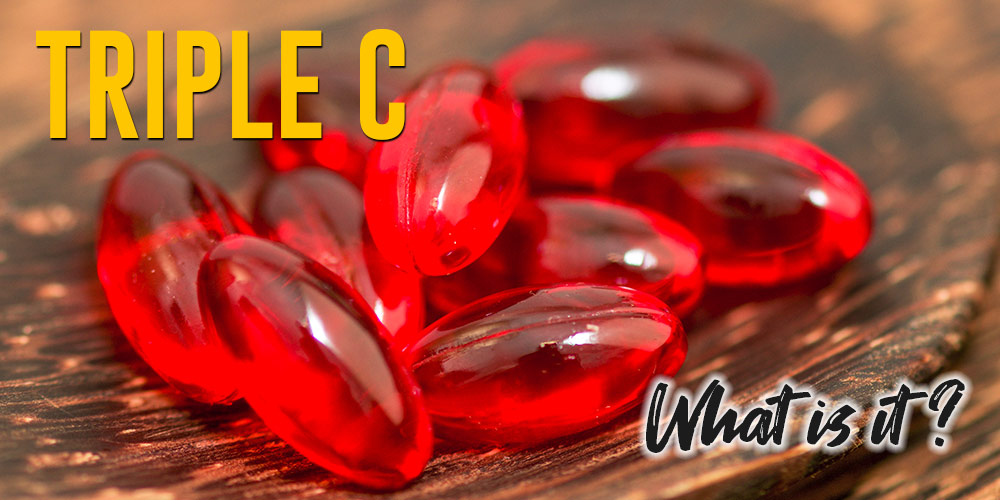
Contrary to common misconceptions, over-the-counter drugs like Triple C are not automatically safe just because they’re readily available in local pharmacies and convenience stores.
Sure, they’re less potent and pose a lower risk than illegal street drugs or highly-regulated prescription drugs—but doesn’t to make them risk-free.
Several categories of over-the-counter drugs are prone to abuse and their recreational use could even lead to destructive behavior.
Whether it’s in the manner of use, amount, or combinations, most of these substances carry a significant overdose risk—especially since they’re readily available and relatively inexpensive to acquire.
According to a 2008 article published in the Journal of the American Board of Family Medicine, over-the-counter drugs are often misused and abused by young people.
One such OTC drug commonly is Dextromethorphan (DXM) — an antitussive suppressant and the active compound in Triple Cs.
Below is detailed information about Triple Cs, including how they look, how long they stay in the body, side effects, risk of overdose, and treatment.
What is Triple C?
Triple C is Coricidin HBP Cough and Cold, also known as Dextromethorphan. It is a popular over-the-counter cold and cough medicine. Like most over-the-counter medicines, DXM is not regulated by the Controlled Substance Act.
The drug is safe and effective against a runny nose, congestion, fever, sneezing and coughing in recommended doses. But it can also lead to hallucination and euphoria when taken in large doses, which is why it’s commonly abused by teenagers.
According to a study appearing in the Archives of Pediatrics & Adolescent Medicine, the average age of Dextromethorphan abusers is 16, with 74.5% of reported cases aged between 9 to 17 years old.
There are several Coricidin products that contain Dextromethorphan, including Delsym, Robitussin, 12-Hour Cough Relief, Vicks DayQuil Cough, Mucinex, Tylenol, Sudafed, and Theraflu.
On the street, Triple C is also known as the following:
- Skittles
- Robo
- Red devils
- Candy
- Poor Man’s PCP
- CCC
- DXM
The abuse of Dextromethorphan is often referred to as skittling or robotripping.
What Does Triple C Look Like?
Coricidin HBP is available in 3 different forms:
- Red, rounded tablets: Coricidin HBP Cough & Cold (30mg DXM)
- Red capsules (softgel): Coricidin HBP Chest Congestion & Cough (10mg DXM)
- Red oblong tablets: Coricidin HBP Maximum Strength Flu (15mg DXM)
Triple C’s candy-like appearance draws comparisons to the popular candy, Skittles. People who abuse the cold medicine often consume it in pill form or snort/inject a powdered version of Dextromethorphan to achieve a hallucinogenic high.



How are Triple C’s Used?
Or better yet, what is it about the mechanism of Dextromethorphan or Triple C that makes it a potential drug of abuse?
Typical nasal decongestants for cold and flu work by causing blood vessels in the nasal passages to constrict—hence reducing inflammation due to dilation of vessels.
However, this poses a risk for patients with high blood pressure, which is where Coricidin HBP comes into play.
Its active ingredient, DXM, interacts with the brain to suppress the cough reflex. This makes the medicine an effective short-term remedy for flu and cold—especially for patients with high blood pressure.
Dosing instructions (by the physician or manufacturer) for Coricidin HBP are based on several factors such as age, treatment response, and existing medical conditions. The maximum daily dosage is 120 mg (12 years or older) or 60 mg (6-12 years).
In addition to its therapeutic benefits, Dextromethorphan is also subject to illicit uses. When abused in high doses, it generates auditory/visual hallucinations and altered time perceptions, a high dubbed robotripping.
An increasingly concerning issue is the exposure to illegally manufactured tablets or Triple C’s powder—which is either purely DXM or mixed with other drugs like methamphetamine and ecstasy. The uncertainty of dose and composition poses an additional risk.
How Long Do Triple C’s Stay in Your System?
The cough relieving effects of Dextromethorphan from a medically-recommended dose last for around 6 hours after oral administration with minimal side effects, if any.
On the other hand, intoxication from a nonmedical dose of Triple Cs kicks in at around 15-30 minutes after use, depending on the method of administration. Like the medical dose, the euphoric effects last for up to 6 hours—but the Dextromethorphan stays in the body longer than that.
DXM is metabolized in the liver into dextrorphan at varying rates depending on the biological characteristics of the individual and amount administered. According to an article by the Drug Enforcement Agency (DEA), up to 10% of individuals metabolize DXM poorly.
For those that metabolize the compound quickly, it can be found in their bloodstream for up to 22 hours—while it can linger for as long as 33 hours in users that metabolize DXM poorly.
Can Drug Tests Detect Triple Cs in Your System?
Drug tests typically look for the presence of specified prescription or illegal drugs in your blood, urine, sweat, or hair. For this reason, most standard tests (e.g., screening for employment or sports organization) are not designed to detect Triple Cs.
However, the pharmacology of Dextromethorphan is similar to that of controlled substances such as ketamine and phencyclidine (PCP). For this reason, some PCP urine immunoassays may give false-positive results if the user consumed high doses of DXM.
Whether Triple C can be detected or not, its abuse puts the users at a high risk of life-threatening side effects. So the real concern should not be whether you’ll be busted—but on safeguarding your health and finding professional care.
What are the Side Effects of Triple C?
When administered as per the recommendations of a medical health professional or Triple C’s manufacturers, DXM rarely elicits side effects. But as a hallucinogen, it can produce feelings of delusion, euphoria, and a host of mild-severe side effects when misused.
The DEA notes that users often report 4 stages of intoxication based on the dosage of Dextromethorphan as shown below:
- Mild Stimulation: 100-200 mg DXM
- Hallucinations and Euphoria: 200-400 mg DXM
- Loss of Motor Coordination and Distorted Visual Perceptions: 300-600 mg DXM
- Dissociative Sedation: 500-1500 mg DXM
Some of the potential side effects of Triple Cs, especially in high doses, include:
- Hyperexcitability (i.e., excessively excitable)
- Agitation
- Elevated body temperature
- Sweating
- Confusion
- Increased heart rate
- High blood pressure
- A build-up of acid in body fluids
- Impaired motor function
- Dissociative episodes
- Audio and visual hallucinations
- Nausea
- Ataxia (i.e., losing control of body movements)
- Hypertension
- Vomiting
- Numbness
- Dizziness
- Slurred speech
- Headaches
- Sleepiness/Drowsiness
- Lethargy (i.e., lack of enthusiasm)
- Slurred speech
- Nystagmus (i.e., uncontrolled eye movement)
PS: Some users may have an allergic reaction to Dextromethorphan but in rare cases. This may trigger impaired respiratory function, dizziness, and swelling in the throat or face.
The risk of negative side effects may also increase for people with health conditions such as an enlarged prostate, glaucoma, or emphysema.
Triple C pills may also interact with other drugs and medication—leading to more severe effects. For example, it’s ill-advised to combine marijuana or alcohol with Dextromethorphan since they all cause drowsiness.
It’s also advisable to avoid using Dextromethorphan with other medications such as anti-anxiety drugs (e.g., alprazolam and zolpidem), antihistamines, muscle relaxants, opioid-based cold or pain relievers, and MAO inhibitors (e.g., moclobemide, safinamide, procarbazine, methylene blue, and Isocarboxazid).
NB: Coricidin products may contain other ingredients such as Acetaminophen, which carries a risk of liver damage if abused.
Can You Overdose on Triple Cs?
Yes, you can overdose on Triple C—even if it’s deemed relatively safe. The drug can have profound effects and exceeding the recommended dose puts you at risk of a Triple C overdose, which can be fatal.
Please note that users who are poor Dextromethorphan metabolizers have an increased risk of overdose if they abuse Triple Cs.
Some of the sign of a Triple C overdose include:
- Increase in blood pressure
- Double or blurred vision
- Irregular heartbeat
- Dissociation
- Hallucinations
- Fever
- Breathing problems
- Profuse sweating
- Coma
- Loss of consciousness
- Death
It is important to seek medical attention immediately if someone presents the above signs of a Triple C overdose.
Triple C’s Risk of Abuse and Addiction
As mentioned earlier, Triple Cs show a concerning potential for abuse. And while it doesn’t often lead to an addiction, it’s possible to develop a substance use disorder from regular misuse and abuse of Triple C—especially if there’s an underlying mental health problem.
So, how do you identify someone who is abusing Triple C’s hallucinogenic effects?
Below are some of the signs of Triple C addiction:
- Mood swings
- Isolation from friends and family—particularly those that don’t use Triple Cs.
- Stealing or selling valuable items to support the addictive behavior
- Loss of appetite—leading to weight loss
- Lying about whereabouts and activities
- Aggressiveness and hostility
- Empty
- Continued use of Triple Cs despite the consequences and risks
- A drop in academic or work performance
- Decreased coordination
- Forgetfulness or short-term memory loss
These behavioral signs are often accompanied by physical symptoms such as skin rashes, twitchiness, stomach pains, labored breathing, vomiting, nausea, and numbness in feet/hands.
Preventive Measures to Curb Triple Cs
Triple Cs deserve increased attention for two reasons; one, their side effects when abused can be severe or fatal in the case of an overdose—and two, products containing DXM are often readily available in your neighborhood drug store or even legally delivery right to your doorstep if ordered online.
With this in mind, the DEA notes that the total number of products containing DXM sold increased from 12.3 million in 2017 to 13.4 million in 2019.
This means that your kids and loved ones have easy access to a hallucinogen that puts their future and lives at risk. It’s also worth considering that the young brain is delicate and drugs may cause lasting harm.
The good news is that some U.S. states have taken legislative measures to regulate the use and sale of pharmaceutical products containing DXM to people under the age of 18.
As a parent, guardian, or responsible citizen, you can help curb the abuse of Triple Cs by first understanding the psychological and physical dangers of Dextromethorphan — including the signs of addiction.
You can also enforce preventive measures such as safeguarding your medicine cabinets and monitoring your child’s internet access to identify online orders made.
If a teenager continues to abuse Triple C, the best course of action is to seek professional treatment. There are rehab facilities that offer individualized, evidence-based, and holistic treatment to address the Triple C’s addiction.
Treatment is Available for People Abusing Triple Cs
You’re not alone in the fight against addiction. Professional support and help is available to help you or your loved one begin the journey to sustainable recovery.
It’s advisable to communicate and reach out to people struggling with Triple C. The idea is to help them understand the threat posed by these substances—and consequently get them into an addiction rehab center.
Related Posts
- Long Term Side Effects of Drugs and Addiction
There's a lengthy list of long-term side effects of drugs and addiction that affect both…
- Effects of Alcohol on the Body and Brain
Even though alcohol consumption is widely accepted in society, there are many negative side effects…
- 12 Common Household Products and Foods that can Cause False Positive Drug Tests
Did you know there are commonly-found household products and foods that can cause false positive…
